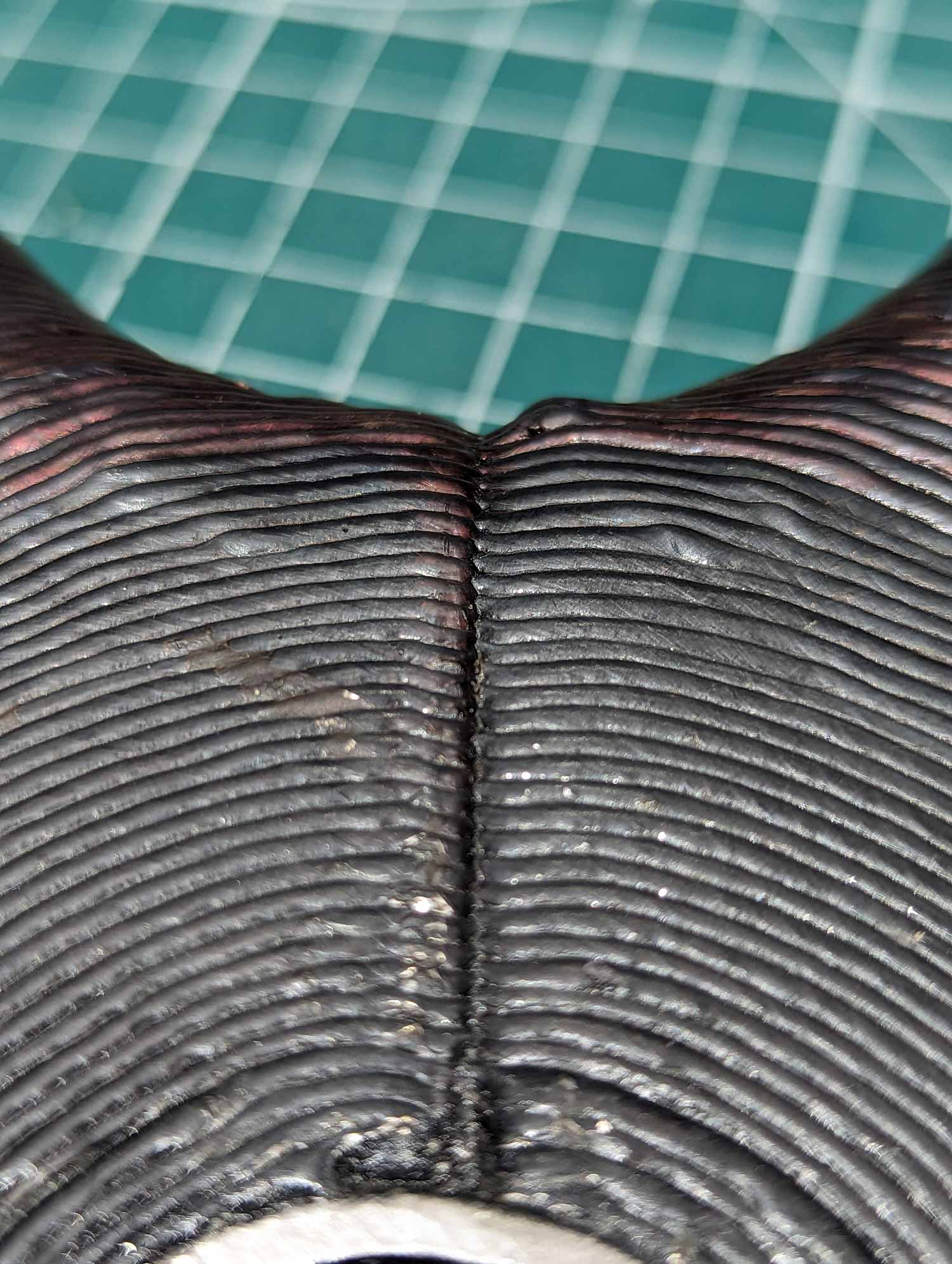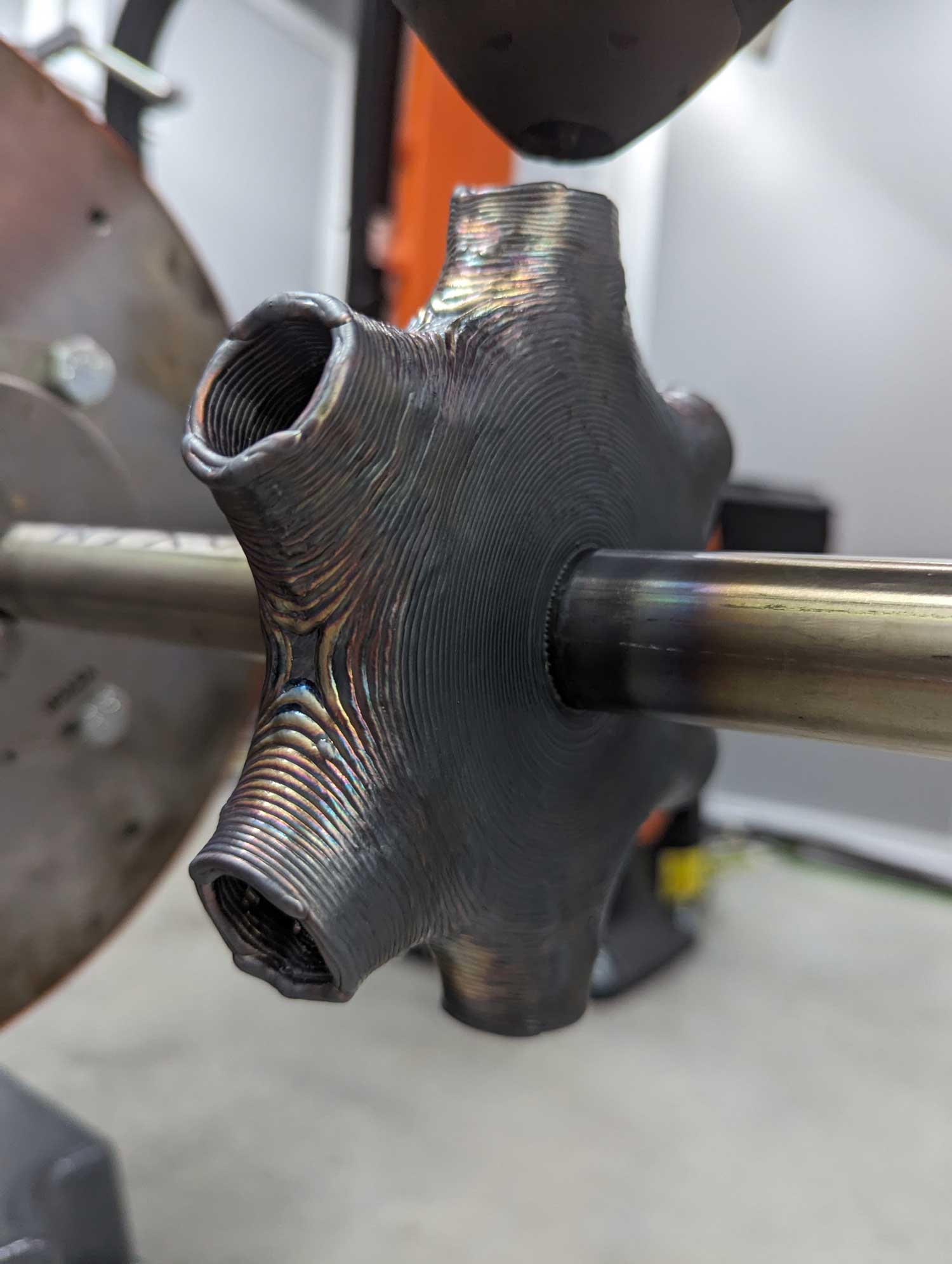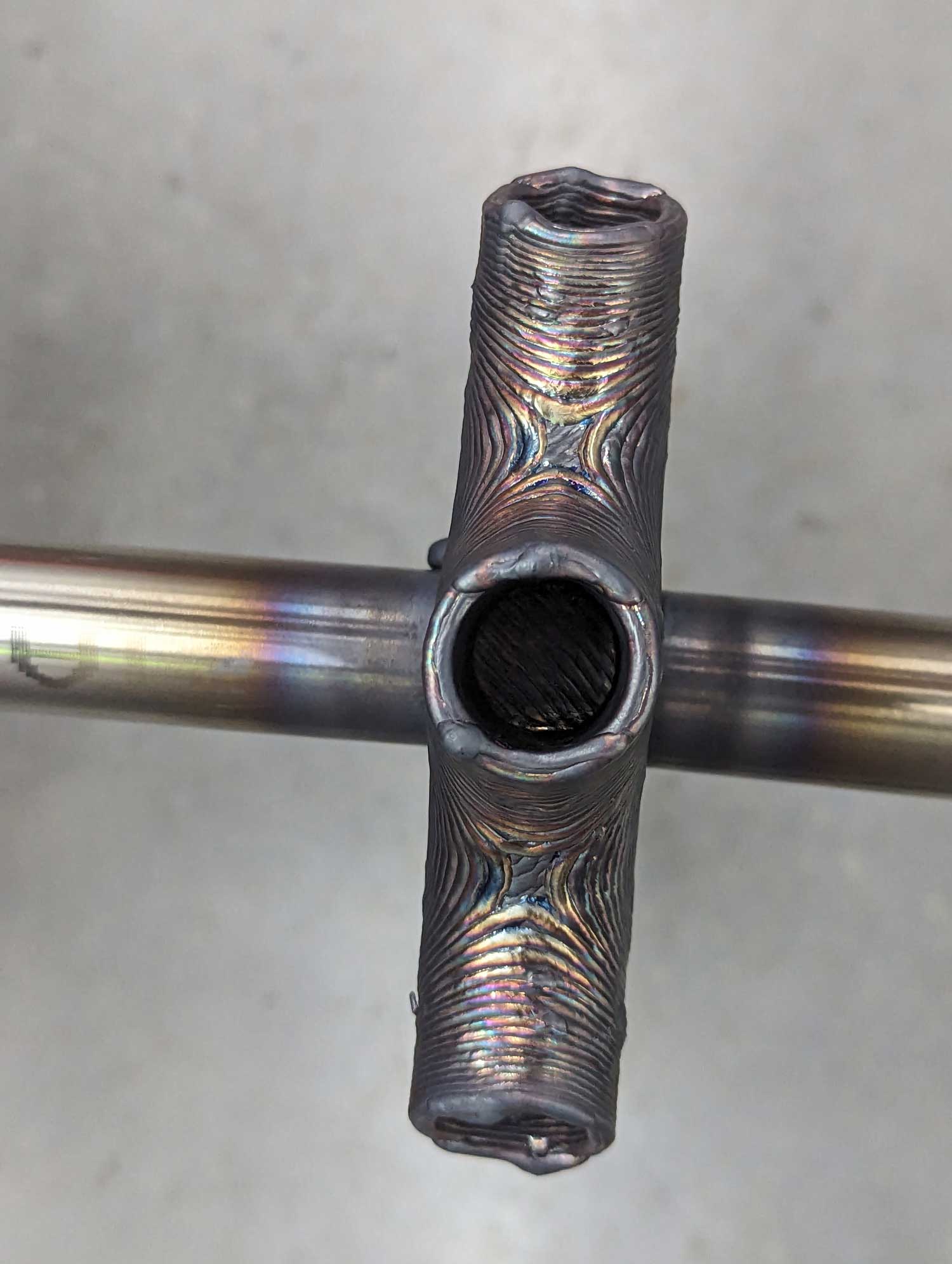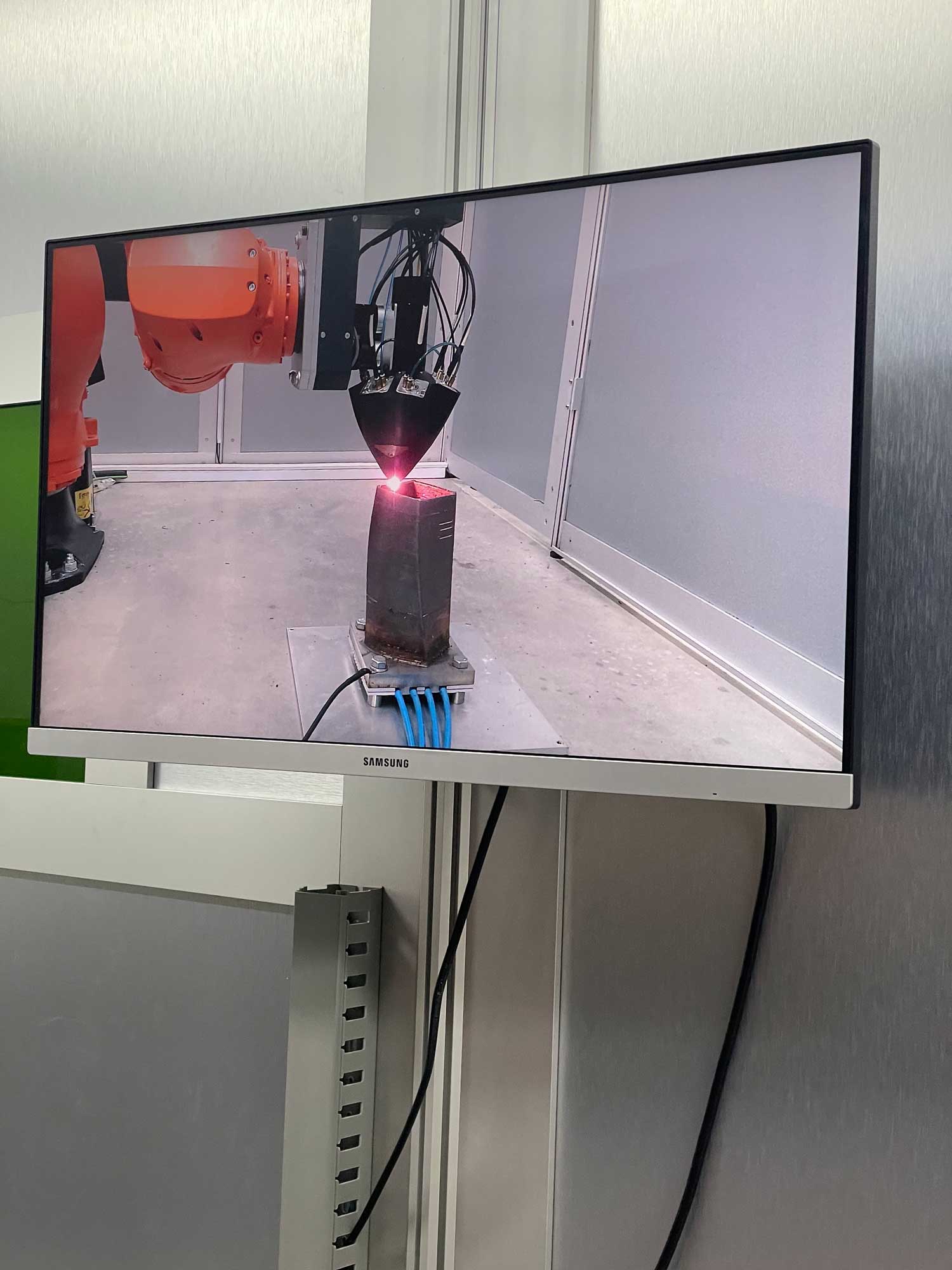AT AKT II, we have pioneered studies into topology optimisation both through digital design tools and practical examples. Through several projects we explored node production using additive manufacturing. With this research, we investigated the opportunity to leverage the power of metal DED.


This exercise was part of a wider research project funded by Tyrens AB foundation, and a consortium including Foster + Partners, Chalmers University of Technology , Tyréns AB , and AKT II., with the support of AI Build as a manufacturing partner.
The research explored a Particle- based Simulation of Crack Propagation in Structural Connections Produced with Direct Energy Deposition 3D- Printing, and the node was manufactured to further explore the potential of predicting yielding and fracture digitally.


The first prototype of this node was printed in 13 hours using the Meltio DED head. Printing this multi axis geometry allowed for our team to take full advantage of our KUKA powerhouse featuring a turntable in collaboration with a robotic arm. AI Build machine set up meant the node could be printed completely support free. Particular effort went into controlling the heat affecting the base.